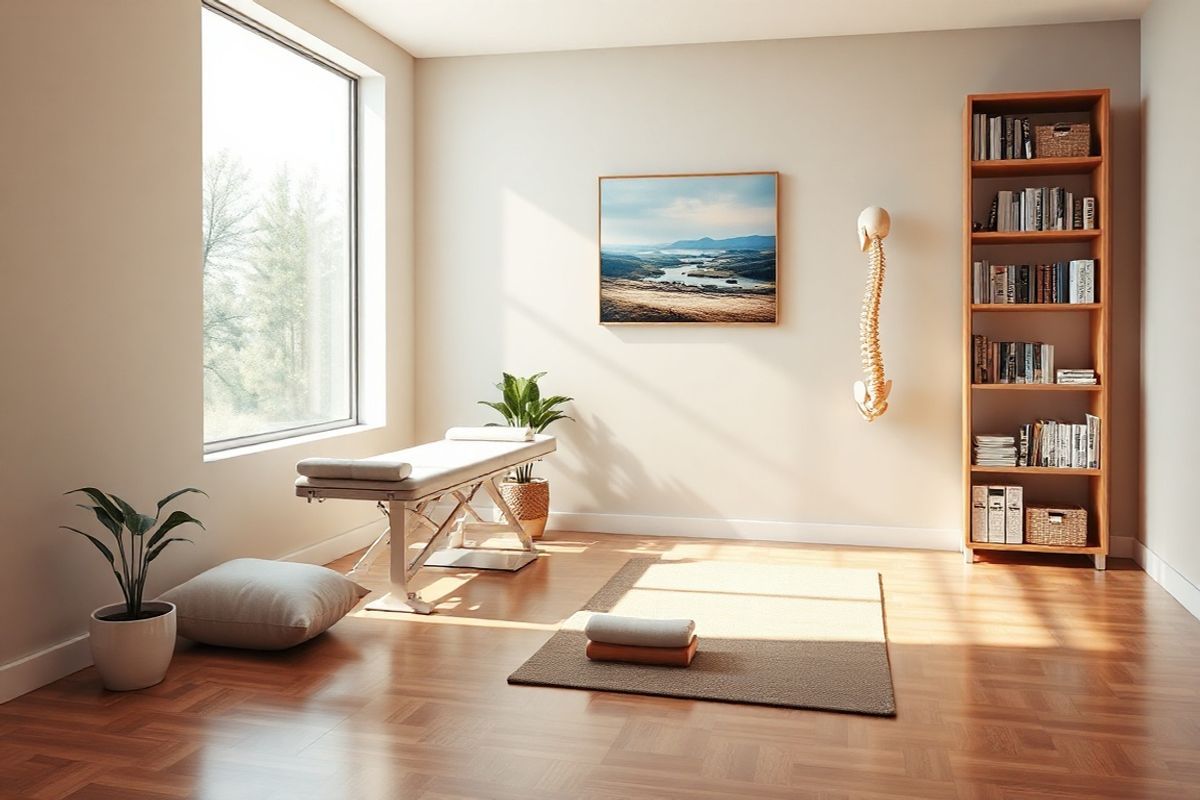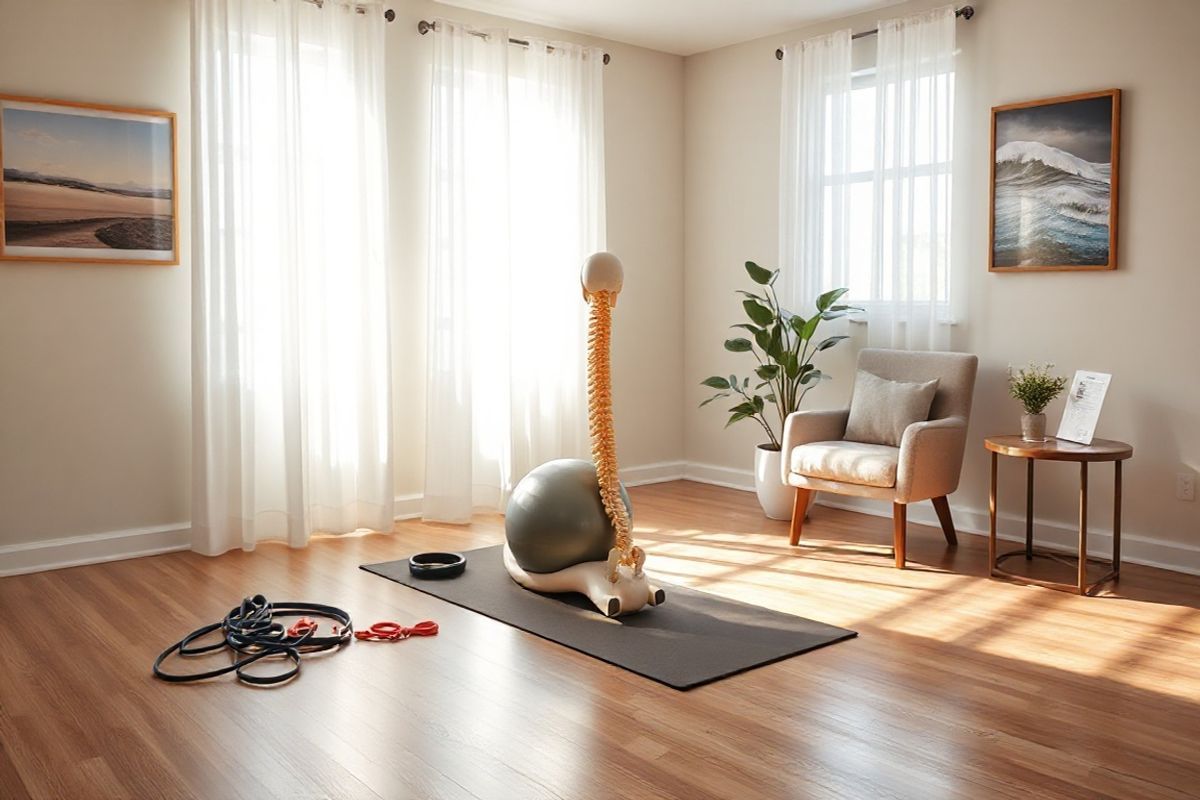Table of Contents
What is scoliosis and How Does It Lead to a Rib Hump?

scoliosis involves a lateral curvature of the spine that can resemble an “S” or “C” shape. While the condition can develop at any age, it most frequently begins during childhood or adolescence. The exact cause of the majority of scoliosis cases remains unknown, and it is classified as idiopathic scoliosis. Other types include congenital scoliosis, resulting from malformations in the spine at birth, and degenerative scoliosis, which typically occurs in adults due to spinal degeneration and age-related changes (NHS, 2023).
As the spine curves, the rib cage on one side may protrude outward, creating a visible rib hump. This deformity can be particularly pronounced when the individual bends forward, revealing the asymmetry of the rib cage. The rib hump is more common in thoracic scoliosis, where the curvature primarily affects the upper and mid-back regions. As the curvature progresses, individuals may experience discomfort, pain, and decreased mobility, impacting their overall quality of life (Brown Health, 2023).
Recognizing the Signs: Identifying Rib Hump Symptoms in Scoliosis Patients

The symptoms of scoliosis can vary significantly based on the severity of the curvature and the individual’s age. Common signs include:
- A visibly curved spine
- Uneven shoulders or hips
- One shoulder blade that appears more prominent than the other
- A rib hump, which is typically more noticeable on one side when bending forward
- Clothes that fit unevenly or don’t hang correctly (NHS, 2023)
In adults, scoliosis may also lead to chronic back pain, fatigue, and difficulties with posture. It is essential for individuals—especially those with a family history of scoliosis—to undergo regular screenings during adolescence to identify any early signs of the condition.
TablCommon Symptoms of Scoliosis
| Symptom | Description |
|---|---|
| Curved spine | Lateral curvature visible in standing posture |
| Uneven shoulders | One shoulder may be higher than the other |
| Rib hump | Protrusion of ribs on one side when bending forward |
| Asymmetrical hip height | One hip may appear more elevated than the other |
| Clothing fit issues | Garments may not fit evenly or properly |
| Back pain | Chronic discomfort, especially in adults |
Effective Non-Surgical Treatments for Scoliosis and Rib Hump Relief
For many individuals with scoliosis, particularly those with mild to moderate curvature, non-surgical treatment options can be effective in managing symptoms and preventing progression. These treatments may include:
Pain Management
Pain management is often a primary focus for adults with scoliosis. Over-the-counter nonsteroidal anti-inflammatory drugs (NSAIDs), such as ibuprofen, are commonly recommended for pain relief. In cases where over-the-counter medications are insufficient, stronger prescription painkillers may be necessary (NHS, 2023).
Physical Therapy
Physical therapy is crucial for strengthening the muscles that support the spine. A tailored exercise program designed by a physiotherapist can enhance flexibility, improve posture, and alleviate pain. Some patients may benefit from specific techniques such as the Schroth Method, which focuses on de-rotating and stabilizing the spine through targeted exercises (Hopkins Medicine, 2023).
Bracing
While bracing is more frequently used in children and adolescents, adults with scoliosis may also find relief through the use of a back brace. A brace can provide support and may be considered for those who are not candidates for surgery but need additional pain management (Brown Health, 2023).
Spinal Injections
Injections of corticosteroids and local anesthetics into the spine may help relieve pain caused by nerve compression associated with scoliosis. However, these are typically short-term solutions, and their effects may last only a few weeks to months (NHS, 2023).
Surgical Options: When Is Surgery Necessary for Scoliosis Rib Hump?
Surgery is generally considered a last resort for scoliosis treatment, primarily reserved for cases where the curvature is severe or worsening and non-surgical interventions have failed to provide relief. Indications for surgical intervention include:
- A significant curvature (typically over 50 degrees)
- Severe back pain that does not improve with conservative treatments
- Neurological symptoms, such as numbness or weakness, indicating nerve compression (UMMC, 2023)
Common Surgical Procedures
-
Spinal Fusion: The most common surgical procedure for scoliosis, spinal fusion involves joining two or more vertebrae to stabilize and correct the curvature. This is typically achieved using bone grafts, rods, and screws (UMMC, 2023).
-
Decompression Surgery: If scoliosis causes compression of spinal nerves, decompression surgery may be performed to relieve pressure on the nerves. This can improve symptoms such as pain, numbness, and weakness (Brown Health, 2023).
-
Osteotomy: In cases of severe deformity, surgeons may perform an osteotomy, which involves cutting and realigning bones to correct the spinal curvature. This is often done in conjunction with spinal fusion to stabilize the spine afterward (UMMC, 2023).
Risks of Surgery
While surgery can significantly improve quality of life and reduce pain, it is not without risks. Potential complications include infection, blood clots, nerve damage, and failure to adequately relieve pain. Recovery can take months to a year, depending on the procedure and the individual’s overall health (NHS, 2023).
Lifestyle Adjustments and Support: Managing Scoliosis and Rib Hump at Home
In addition to medical treatments, individuals with scoliosis can adopt various lifestyle adjustments to manage symptoms effectively. Here are some strategies:
Regular Exercise
Engaging in regular physical activity is crucial for maintaining overall health and managing scoliosis. Low-impact exercises such as swimming, walking, and cycling can help strengthen the back and abdominal muscles, which provide support for the spine. It is advisable to consult a healthcare professional before starting any new exercise program (Brown Health, 2023).
Weight Management
Maintaining a healthy weight can alleviate additional strain on the spine. Individuals with scoliosis should aim for a balanced diet that supports weight management and overall health.
Ergonomic Adjustments
Making ergonomic adjustments in daily life, such as using supportive chairs or desks, can help improve posture and reduce discomfort associated with scoliosis. Consideration of proper body mechanics during lifting and other activities can also prevent exacerbation of symptoms (UMMC, 2023).
Support Groups
Joining a support group can provide emotional support and resources for individuals living with scoliosis. These groups offer opportunities to connect with others facing similar challenges, share experiences, and learn about coping strategies.
Frequently Asked Questions (FAQ)
What causes scoliosis?
Scoliosis can arise from various factors, including genetic predispositions, congenital conditions, and degenerative changes in the spine. The most common form, idiopathic scoliosis, has no known cause.
At what age does scoliosis typically develop?
Scoliosis most often develops during childhood or adolescence, particularly during growth spurts between the ages of 10 and 15.
How is scoliosis diagnosed?
Scoliosis is diagnosed through physical examinations and imaging tests, such as X-rays, which assess the degree of spinal curvature.
Can scoliosis be prevented?
There is no known prevention for idiopathic scoliosis; however, early detection and intervention can help manage the condition and prevent progression.
What are the treatment options for adults with scoliosis?
Treatment options for adults include physical therapy, pain management, bracing, and, in severe cases, surgical intervention.
References
- NHS. (2023). scoliosis. Retrieved from https://www.nhs.uk/conditions/scoliosis/
- Brown Health. (2023). Adult Scoliosis: Treatment and Success Stories. Retrieved from https://www.brownhealth.org/be-well/adult-scoliosis-treatment-and-success-stories
- UMMC. (2023). Adult Scoliosis Treatment | Baltimore. Retrieved from https://www.umms.org/ummc/health-services/orthopedics/services/spine/patient-guides/scoliosis
- Hopkins Medicine. (2023). Schroth Method for Scoliosis. Retrieved from https://www.hopkinsmedicine.org/health/conditions-and-diseases/scoliosis/schroth-method-for-scoliosis











